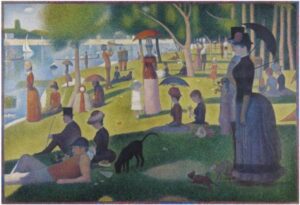What are Memory Palaces?

3605 Views
Are Memory Palaces Really Useful for Medical Students?
This is an excellent question; thanks for asking! To begin, let’s rewind a few thousand years to find ourselves in the fifth century B.C.E., looking in on a heated dinner party in the Greek region of Thessaly. The waves of the wine-dark Aegean sea crash soothingly on the shore outside the house as twenty-odd guests at this feast argue about a recent boxing match and who their favorites were. One guest, a middle-aged poet named Simonides depicted flatteringly below, had been commissioned to write a flattering and perhaps not entirely accurate ode to their host, and is called outside to recite it for some other guests – when, all of a sudden, the ceiling of the house collapses and kills everyone inside.
Now this may have been one of your routine dinner-parties-gone-wrong that faded from memory like so many others, if it weren’t for one thing: Simonides survived. And when the Greek authorities (there were, alas, no fire departments in the fifth century B.C.) arrived to investigate the incident, Simonides was able to name every person at the party.
This may not sound particularly remarkable, but consider that Simonides knew almost no one at the party before coming, and he had made no effort to memorize anyone. Despite this, he could recall all of their names by going around the seats at the dinner table in his memory and thinking about who was sitting where. “Ah, that fellow across from me. He had a dark beard, big laugh… that must have been Achaeus!”
In the same way, think of the last time you went out to dinner with a large group, let’s say eight to ten people or more (I will hazard a guess that this was sometime before March of 2020). Think of the dinner table: can you recall where your friends were sitting? Can you recall people you didn’t know before the meal? Even if not their names, a general description and where they were sitting. Now it might be that there are a few hazy spots, a few people where you can’t remember whether they were in the far right chair or the one next to it, but I would bet you can pull up a pretty decent image of what that dinner table looked like.
This is the core idea behind memory palaces, also called the “method of loci” (MoL) – essentially, location- and image-based learning. The concept is that we as humans are quite good at remembering visuals and landmarks. As an example, take a look at this painting for ten seconds and then minimize the screen and try to recall a general description: can you recall some shapes from the painting? What are the general colors on the left side versus the right side?
You can recall many of the shapes in this picture because your brain knows how to chunk the information it contains. The vertical stripes of brown paint in the upper right corner are trees, so it’s not too hard to remember that the tree in the middle of the painting has several structures that branch off of it, or that each tree is associated with a cloud of green coloration at the top. You can remember that the black shape at the bottom middle of the painting has four thin projections from the bottom and one from the right side because your brain knows those are a dog’s legs and its tail. This is not simply a collection of numbers or enzymatic names you’re supposed to memorize. Now look at the picture below for ten seconds:
(Apologies for any trauma this evokes for those of you status post Step 1 studying)
Now minimize this screen and think of the chart you just saw. How many of these specific names and numbers can you recall? How does that compare to the first image? This is in fairness a bit of a loaded comparison, because the bottom image is among the more complex diagrams you have to learn for Step 1 studying, but the concept stands: I will bet that you remembered more distinct characteristics of the first image, and that it was probably more fun to look at than a huge chart of glycogen processing steps. This is the conceptual approach we’ll be taking: take the information you need to memorize, encode it into a visual vocabulary, and then put images in various imagined places to keep track of them.
For those of you who have used Sketchy Medical, Picmonic, or Pixorize, it’s a very similar concept. The only difference is that you’ll be making your own images instead of using cartoons that are made ahead of time for you. This means putting in a little more work in the beginning as you decide on your visual vocabulary, but the images you create will stick with you for much longer than they would with many other methods of memorization. Keep your eyes peeled for an upcoming blog post in which we’ll go over the research behind MoL and talk about its strengths and weaknesses in detail.
Thanks for reading!
Featured Articles



